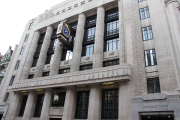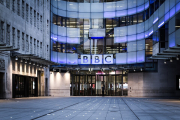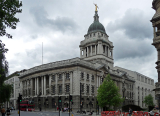
For over 500 years, the Palace of Holyroodhouse, also known as Holyrood Palace or Holyrood House, has stood as the primary royal dwelling in Scotland. This historic landmark's story
intertwines with illustrious royal figures such as Mary, Queen of Scots, and today, it serves as King Charles III's abode during his visits to Scotland.
Initially established by David I in 1128 as an Augustinian monastery, the Palace experienced an evolution as The Abbey flourished and Edinburgh gained prominence as Scotland's capital. Holyrood emerged as the preferred residence for monarchs visiting the nation. In 1501, James IV cleared a space near The Abbey to erect a palace for himself and his spouse, Margaret Tudor – the sister of Henry VIII. Presently, only a fragment of the gatehouse remains as a testament to its past.
As succeeding monarchs assumed the throne, the palace underwent ongoing transformations. Between 1528 and 1532, James V introduced a colossal tower, while a new west front south tower was integrated between 1535 and 1536. Mary, Queen of Scots, spent a significant portion of her tumultuous life within these walls. Reigning from 1542 to 1567, she contracted two of her three marriages at Holyrood House. Furthermore, her secretary David Rizzio was tragically slain within her private chambers by a faction led by her husband Lord Darnley, purportedly driven by jealousy over Rizzio's influence on the former queen.
By the time Charles I's coronation occurred in 1633, substantial renovations graced the palace. Charles II's crowning took place in Scotland in 1651. While he never revisited the palace, he spearheaded a substantial reconstruction of Holyroodhouse during the 1670s. Orchestrated by Scottish architect Sir William Burce, a tower was appended to the palace's right, endowing it with a symmetrical facade. Novel royal quarters emerged, adorned with opulent embellishments like ornate plasterwork ceilings.
In the 20th century, King George V and Queen Mary continued to rejuvenate and restore the palace. Viewing it as a familial haven, they modernized the palace by installing bathrooms, elevators, and electricity to align with contemporary standards. This era also marked the commencement of the tradition of hosting garden parties at the palace. In 1922, the palace was chosen as the site for the Scottish National Memorial to Edward VII, and a statue of Edward was placed on the forecourt, facing The Abbey.
Annually, the British monarch observes "Royal Week" at the palace during the summer. As a property of the Crown and an official royal residence in Scotland, the responsibility for maintaining and conserving the Palace and The Abbey falls under the purview of the Scottish government. In April 2016, the Royal Collection Trust allocated £10 million for the redevelopment of the exterior spaces at Holyrood, encompassing the grounds and forecourt. This project reached completion in 2018.
Following the passing of Queen Elizabeth II on September 8th, 2022, at Balmoral Castle, her casket was transported to the palace. It lay in repose within the Throne Room from September 11th to 12th, before being conveyed in procession to St Giles' Cathedral. This event marked the first royal obsequies in Scotland since the interment of James V at Holyrood Abbey in January 1543.
The palace remains open to the public throughout the year. Photo by Kim Traynor, Wikimedia commons.







































